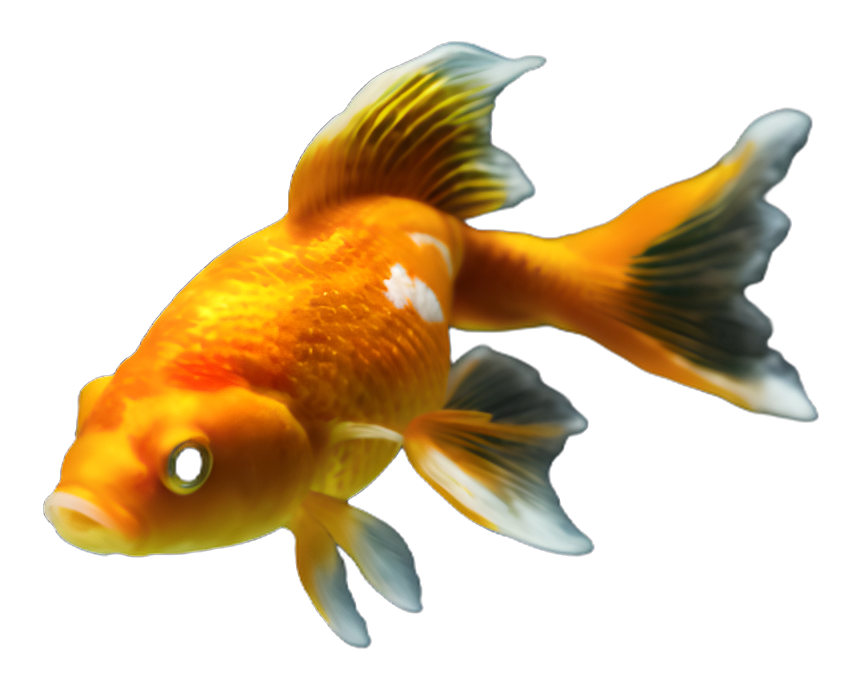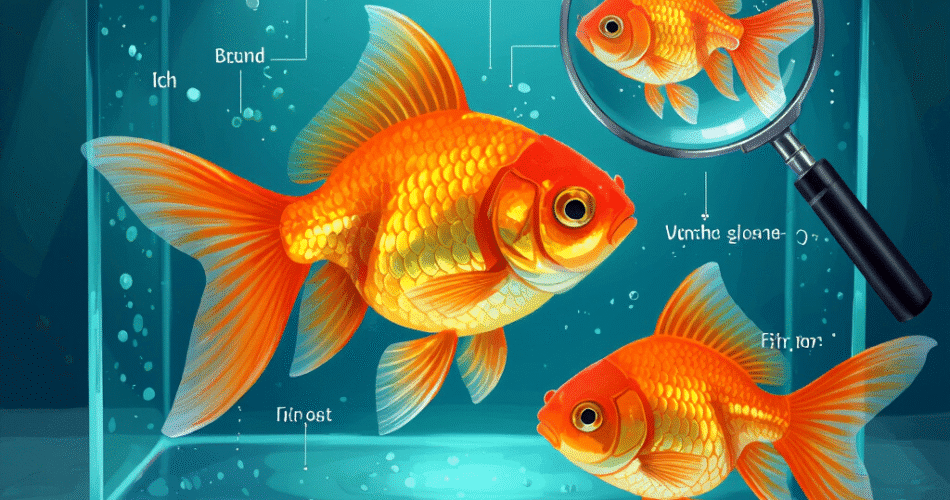Introduction 🐟✨
Imagine coming home after a long day, only to find your beloved goldfish swimming sluggishly at the bottom of the tank with some white spots on its fins. As a cherished pet, your goldfish deserves the best care, but just like any other living creature, it can suffer from common goldfish diseases that threaten its health and longevity. Learning about these diseases and how to prevent them is essential for every goldfish owner. With a little knowledge and some simple prevention strategies, your aquatic friend can thrive in a healthy, sparkling environment. In this article, we will explore the major goldfish diseases, their symptoms, the best prevention strategies, treatment options, and answer frequently asked questions to help you become a confident and well-informed caretaker.
Common Goldfish Diseases: Symptoms and Causes 🦠🔍
Goldfish are surprisingly susceptible to a range of diseases, many of which can quickly impact their wellbeing if not recognized early. Here are some of the most frequent common goldfish diseases along with their symptoms and causes:
Ich (Ichthyophthirius multifiliis) – White Spot Disease
- Symptoms: Tiny white spots resembling sugar granules appearing all over the body and fins, fish rubbing against objects, lethargy, rapid gill movement.
- Causes: Parasitic infection triggered by stressful conditions like rapid temperature changes or poor water quality.
Fin Rot
- Symptoms: Torn, ragged, or disintegrating fins, discoloration around fin edges, and sometimes an unpleasant odor.
- Causes: Bacterial infection often caused by unsanitary tanks, injuries, or weakened immunity.
Swim Bladder Disease
- Symptoms: Difficulty swimming, floating upside down or sinking, loss of balance.
- Causes: Overfeeding, constipation, bacterial infections, or physical deformities.
Velvet Disease
- Symptoms: Fine yellow or rusty dust covering the body, clamped fins, rapid gill movement, and lethargy.
- Causes: Parasite called Oodinium thrives in poor water conditions or stressed fish.
Dropsy
- Symptoms: Swollen, bloated body, raised scales (pinecone appearance), lethargy, loss of appetite.
- Causes: Severe bacterial infection often related to organ failure and prolonged poor water quality.
Recognizing these symptoms early is key to stopping disease progression and preventing outbreaks in your aquarium. Observing your goldfish regularly helps to ensure quick action.
Prevention Strategies for Goldfish Diseases 🛡️🌿
Prevention is always better than treatment when it comes to common goldfish diseases. Here are practical and effective prevention strategies to keep your goldfish healthy and disease-free:
Maintaining Excellent Water Quality
Since poor water conditions are the root cause of most diseases, frequent water tests and changes are crucial. Aim for ideal water parameters with proper pH (6.5-7.5), low ammonia and nitrite levels, and stable temperature suited for goldfish (65-75°F). Utilize good filtration systems and perform partial water changes (about 25%) weekly to reduce harmful bacteria.
Providing Proper Nutrition
A balanced diet helps boost your goldfish’s immune system. Feed high-quality pellets or flakes formulated specifically for goldfish. Supplement their diet occasionally with fresh vegetables like peas (de-shelled) or spinach. Avoid overfeeding, as excess food degrades water quality and leads to obesity or digestive problems.
Quarantine New Fish and Plants
Before introducing new goldfish or aquatic plants into your tank, keep them isolated for at least 2 weeks in a separate quarantine tank. This process helps detect hidden diseases before they spread to your established fish.
Regular Tank Cleaning
Clean algae, uneaten food, and debris from the tank regularly. Avoid harsh chemicals; instead, use aquarium-safe cleaning tools. Keeping decorations and substrate clean minimizes bacteria buildup.
Natural Remedies and Supplements
Some aquarists use natural additives like aquarium salt (in moderation), Indian almond leaves, or garlic extracts known to enhance fish immunity and reduce risks of infection. Always research and apply these carefully following dosage recommendations.
Selecting Healthy Goldfish
Choose robust goldfish from reputable breeders or stores. Look for active behavior, bright coloration, intact fins, and clear eyes when buying new fish to reduce disease introduction risks.
Treatment Options for Common Goldfish Diseases 💊🐠
If your goldfish does develop a disease despite prevention efforts, prompt and correct treatment is critical. Here are treatment options tailored to the most common ailments:
Medications and Over-the-Counter Treatments
- Ich: Use commercially available anti-parasitic medications containing formalin, malachite green, or copper sulfate. Raising water temperature gradually can speed parasite life cycle interruption.
- Fin Rot: Antibiotic treatments like tetracycline or erythromycin work well, alongside improving water quality.
- Velvet Disease: Medications with copper-based ingredients or dimilin target the parasite effectively.
- Dropsy: Antibiotic injections often needed but hard to treat at home; consult veterinarians promptly.
Home Remedies and Supportive Care
For less severe conditions or as supportive care:
- Perform frequent water changes to improve habitat quality.
- Use aquarium salt (1 teaspoon per 5 gallons) to reduce stress and assist healing (avoid with live plants).
- Feed easily digestible foods like boiled peas to help with swim bladder issues.
When to Consult a Vet or Aquatic Specialist
If treatment outcomes are poor, symptoms worsen, or the disease appears advanced (e.g., severe dropsy), professional help is essential. Some conditions require specialized antibiotics or care beyond home capabilities.
Step-by-Step Treatment Example: Treating Ich
- Increase water temperature to about 78°F gradually over 24 hours.
- Administer anti-ich medication as per package instructions.
- Perform 25% water changes daily, removing any visible spores or parasites.
- Continue treatment for 7-10 days to ensure all parasites complete their life cycle.
- Monitor fish closely and maintain good tank hygiene post-treatment.
FAQs About Goldfish Diseases and Prevention ❓🐡
How do I know if my goldfish is sick?
Look for changes in behavior such as lethargy, loss of appetite, unusual swimming patterns, visible spots or discolorations, and damaged fins. Early detection is crucial to successful treatment.
Can goldfish diseases spread to other fish?
Yes, many diseases like Ich, fin rot, and velvet disease are contagious and can spread rapidly in shared tanks. Quarantining new fish and maintaining good tank hygiene helps prevent outbreaks.
What is the best water temperature to prevent disease?
Goldfish thrive best between 65-75°F (18-24°C). Keeping temperatures stable within this range limits stress and helps prevent many common diseases.
How often should I clean the tank?
Partial water changes of about 25% should be done weekly, while cleaning substrate and decorations can be done every 2-3 weeks or as needed. Avoid complete tank cleanings that might disrupt beneficial bacteria.
Are aquarium salt and natural remedies safe for all goldfish?
Use aquarium salt carefully, typically not exceeding 1 teaspoon per 5 gallons, and avoid it if you have live plants. Always research natural remedies and start with small doses to observe any adverse reactions.
Can overfeeding cause diseases in goldfish?
Yes, overfeeding leads to obesity, poor water quality, and digestive issues that increase susceptibility to swim bladder disease and infections.
Conclusion 🌟🐠
Understanding common goldfish diseases, their symptoms, and causes is the first step to ensuring a vibrant, healthy aquatic companion. The importance of maintaining excellent water quality, providing proper nutrition, quarantining new arrivals, and keeping a clean tank cannot be overstated as key prevention strategies. When diseases do occur, prompt treatment using the right medications or home remedies can save your fish and prevent spread. This article serves both new and experienced goldfish owners by providing clear guidance rooted in the latest knowledge.
Remember, early detection paired with ongoing care helps your goldfish live a long, happy life. Don’t hesitate to seek professional help for severe diseases, and always keep learning about the best practices in goldfish care. Your responsible efforts will keep your finned friends swimming joyfully for years to come! 🐠💖

